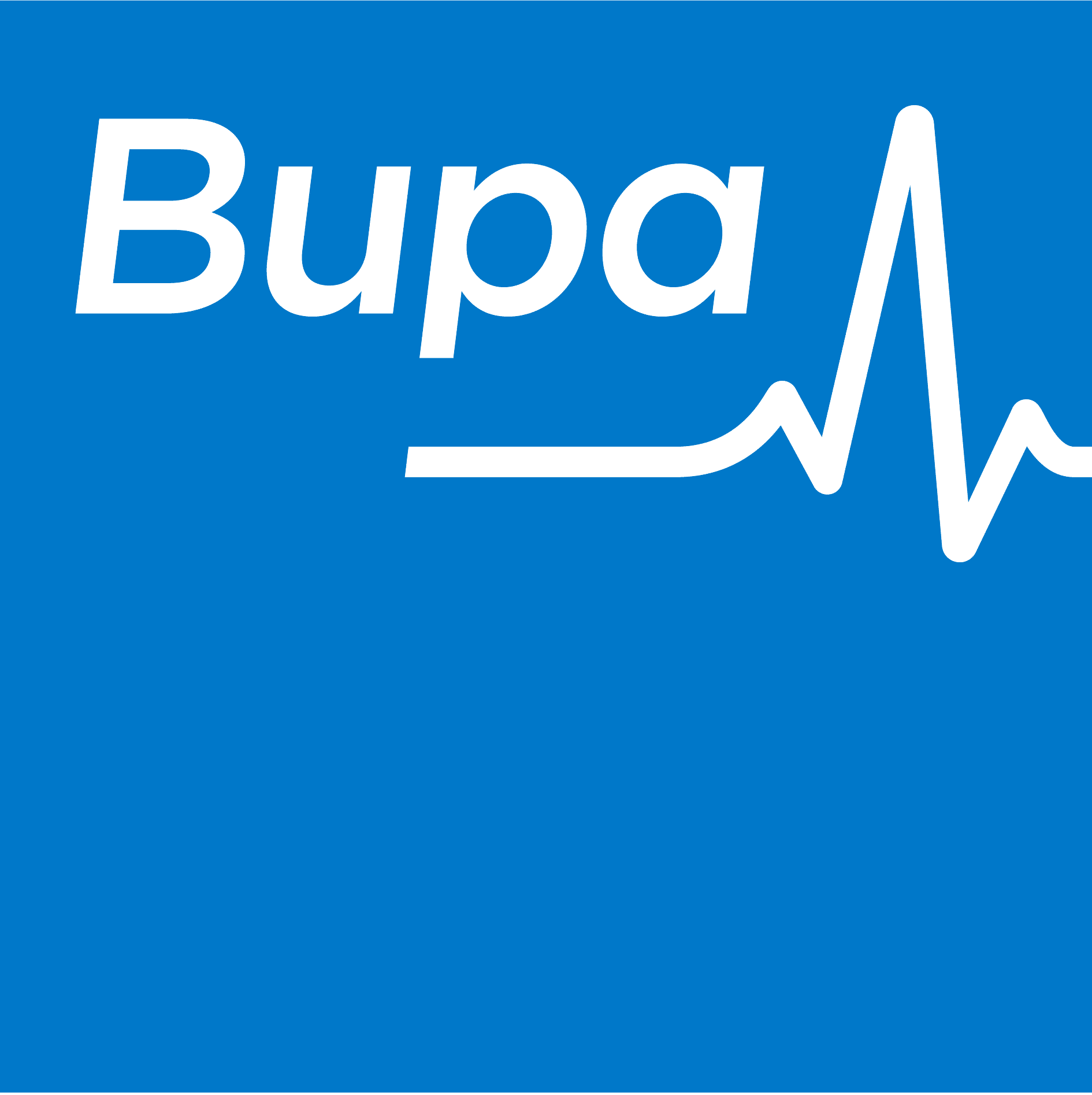What is private health insurance?
Private health insurance can help you cover the costs of medical treatment and care that aren’t included under Medicare. By taking out a policy and paying regular premiums, you can access a choice of hospitals and doctors, along with a wide range of other benefits.
Policies are available to suit a variety of circumstances, including:
- Singles: singles health insurance is cover designed for one person, which can be tailored to their individual health needs.
- Couples: a couples health insurance policy covers two adults in a relationship, typically offering combined benefits and premiums for both.
- Families: family health cover provides coverage for two adults and their children, with options for family extras.
- Single-parent families: single-parent policies are tailored for one adult with dependent children.
- Seniors: seniors health cover is designed to meet the specific health needs and provide extra benefits for older adults.
- Visa holders: most people living in Australia on temporary visas will require either overseas visitor health cover (OVHC) or overseas student health cover (OSHC) (if they are an international student). These policies are designed to help cover the needs of those who cannot access Medicare.
What's the difference between Medicare and private health insurance?
Medicare is Australia's public health system, providing free or subsidised access to essential healthcare services, such as GP visits, hospital care and certain medical procedures, to citizens, permanent residents and select visa holders.
Private health insurance, meanwhile, is optional cover that complements Medicare by providing access to additional services and treatments not available in the public system. It also allows you to be treated in private hospitals, choose your own doctor or specialist, and often experience shorter waiting times for elective procedures. While it comes at a cost, requiring you to pay for your cover, it can give you greater flexibility and choice in managing your healthcare needs.
Types of health insurance
There are two main types of health insurance available in Australia, available to purchase separately or as a combined policy:
Hospital cover
Hospital cover helps pay for in-hospital treatment as a private patient in either a public or private hospital. It may also give you the option to choose your doctor, access private hospital care and avoid public hospital wait times, depending on your policy.
Private hospital cover in Australia is divided into four tiers: Basic, Bronze, Silver and Gold. Introduced through government reforms in 2019, these tiers define the minimum hospital treatments health funds must include in their policies.
Some insurers offer “Plus” versions of Basic, Bronze and Silver plans, which include additional services beyond the standard coverage for that tier. There is no “Gold Plus” option because the Gold tier already covers all available clinical categories.
Extras cover
Extras cover helps pay for out-of-hospital treatments that Medicare doesn’t cover. It’s designed to help with preventive and remedial treatments that support overall health.
Unlike hospital cover, extras cover isn’t classified by the government, so policies can vary widely between health funds.
Most insurers offer three general levels of cover – low, medium and high – which differ in both the range of services included and the benefit limits.
Low-level policies typically cover fewer services with lower limits, while medium and high-level policies provide broader coverage and higher annual limits.
Benefit limits are the maximum amounts your insurer will pay for each service or in total per year.
What is an excess in health insurance?
An excess is the amount you agree to pay out of your own pocket towards a hospital claim before your health insurer contributes. It does not apply to any extras claims.
For example, if your policy has a $500 excess and you have a hospital procedure costing $2,000, you would pay the first $500 and your insurer would cover the remaining $1,500.
Choosing a higher excess can lower your premiums, while a lower excess means you’ll pay less when you make a hospital claim.
What does private health insurance cover?
Hospital cover
| Basic | Bronze | Silver | Gold |
|---|---|---|---|
| Palliative care (restricted) | Everything in Basic, plus: | Everything in Bronze, plus: | Everything in Silver, plus: |
| Psychiatric services (restricted) | Brain and nervous system | Heart and vascular system | Cataracts |
| Rehabilitation (restricted) | Eye (not cataracts) | Lung and chest | Joint replacements |
| Ear, nose and throat | Blood | Dialysis for chronic kidney failure | |
| Tonsils, adenoids and grommets | Back, neck and spine | Pregnancy and birth | |
| Bone, joint and muscle | Plastic and reconstructive surgery (medically necessary) | Assisted reproductive services | |
| Joint reconstructions | Dental surgery | Weight loss surgery | |
| Kidney and bladder | Podiatric surgery | Insulin pumps | |
| Male reproductive system | Implantation of hearing devices | Pain management with device | |
| Digestive system | Sleep studies | ||
| Hernia and appendix | |||
| Gastrointestinal endoscopy | |||
| Gynaecology | |||
| Miscarriage and termination of pregnancy | |||
| Chemotherapy, radiotherapy and immunotherapy for cancer | |||
| Pain management | |||
| Skin | |||
| Breast surgery (medically necessary) | |||
| Diabetes management (excluding insulin pumps) | |||
| Source: PrivateHealth.gov.au | |||
Extras cover
| Low | Medium | High |
|---|---|---|
| Acupuncture | Everything covered under low-level extras, plus: | Everything covered under medium-level extras, plus: |
| Ambulance | Approved health program | Antenatal and postnatal care |
| Cognitive behavioural therapy | CPAP | Laser eye surgery |
| Chinese herbal medicine | Dietary advice | Orthodontics |
| Chiropractic and osteopathy | Eye therapy | Travel and accommodation |
| General dental | Exercise physiology | |
| Preventative dental | Hearing aids | |
| Myotherapy | Home nursing | |
| Optical | Major dental | |
| Physiotherapy | Occupational therapy | |
| Remedial massage | Orthotics | |
| Pharmaceuticals | ||
| Podiatry | ||
| Psychology | ||
| Speech therapy |
Can I get ambulance cover with my health insurance?
Yes. Emergency ambulance cover is a common inclusion in many health insurance policies, even those offering basic hospital or low-level extras cover. Alternatively, you can take out standalone ambulance-only cover, with prices starting from around $60 per year for singles, depending on the state or territory you live in. Residents of Queensland and Tasmania receive free ambulance services through their state governments.
What isn’t covered by private health insurance?
Private health insurance doesn’t cover everything, including treatments and services typically covered by Medicare. Your private health cover will not include:
- GP visits
- Visits to public or private hospital emergency departments
- Outpatient tests like X-rays, MRIs, CT scans and blood tests
- Non-medically necessary procedures such as cosmetic surgery
- Treatment outside Australia
Extras cover can also vary widely between providers, so it’s important to check exactly what’s included in each policy before you decide, especially if you want to claim for specific services like orthodontics or laser eye surgery.
How much is private health insurance?
Health insurance costs in Australia are rising – in April 2025, premiums rose by an average of 3.74%, the largest increase since 2018, with some policies going up by as much as 9.56%.
However, there’s a huge range of cover available at different price points. Below are examples of the cheapest and most expensive premiums available through our partner Compare Club in October 2025:
| Household | Cover type | Cheapest fortnightly premium | Most expensive fortnightly premium |
|---|---|---|---|
| Singles | Hospital only | $37 | $111 |
| Extras only | $8 | $62 | |
| Combined | $46 | $192 | |
| Couples | Hospital only | $74 | $216 |
| Extras only | $16 | $111 | |
| Combined | $93 | $331 | |
| Family | Hospital only | $74 | $222 |
| Extras only | $17 | $153 | |
| Combined | $93 | $354 | |
| Single-parent family | Hospital only | $61 | $189 |
| Extras only | $13 | $108 | |
| Combined | $74 | $307 | |
| Source: Compare Club Figures are based on 35-year-old adults living in Sydney with a base-tier income ($101,000 or less). Hospital-only policies assume a $750 excess for cheapest options and a $250 excess for the most expensive. Combined policies include basic hospital plus low extras for the cheapest options, and gold hospital plus high extras for the most expensive. These examples are for illustration only. Your actual premium will vary based on your age, location, income and level of cover. |
|||
How to get a private health insurance policy through Savvy
-
Decide what you need
Think about whether you want hospital cover, extras or both.
-
Fill out our online form
Apply for a quote by providing your personal details and cover preferences.
-
Speak with a health insurance advisor
Get expert guidance to make sure the cover suits your needs.
-
Take out your policy
Choose your health insurance plan and start benefiting from your cover.
Why compare health insurance policies through Savvy?
100% free service
There's no need for you to pay a cent to compare a variety of competitive policies side-by-side in one place.
Compare policies online
You can consider the inclusions, premiums, benefits and other key factors easily online, whether you're at home or on the go.
Trusted partners
We're partnered with Compare Club to help our customers lock in the best deal tailored to their needs.
Pros and cons of private health insurance
Pros
-
Beat the waiting lists
Having private health cover may give you the opportunity to skip public hospital queues and get the treatment or surgery you need when you want it.
-
Choose your doctor
As a private patient, you'll usually be able to choose the doctor you see or the surgeon who performs your operation (subject to availability).
-
Choose your hospital
The doctor or surgeon you've chosen may operate out of several locations, so you may be able to choose which hospital you're admitted to for your treatment or surgery.
-
Save on treatments
There are many health treatments and services that aren't covered by Medicare but can be covered by your hospital or extras cover, reducing or removing your out of pocket expense.
-
Avoid the Medicare Levy Surcharge
Taking out even the most basic hospital cover will allow you to avoid paying the MLS and save on your tax bill.
Cons
-
Potentially high costs
Health insurance is an additional cost to factor into your finances. Like any isurance higher-level policies can give you peace of mind, but can cost hundreds of dollars per month.
-
Exclusions
Insurance may not cover 100% of the cost of your medical treatment due to exclusions or limits on your policy or gap fees charged by your practitioner.
-
Waiting periods
If you're taking out health insurance for the first time or are upgrading to a higher level of coverage, there may be waiting periods you have to serve before making a claim.
-
Excess and co-payments
You can reduce your premiums by electing to pay an excess and/or co-payment if you're hospitalised. Each time you make a claim, you might have to first pay an excess or make a co-payment towards the cost of your hospital stay.
Health insurance and tax in Australia
In Australia, having private health insurance can offer tax benefits in addition to providing extra healthcare coverage. While private health insurance is not tax deductible, holding an eligible policy can reduce your tax liability by avoiding the Medicare Levy Surcharge and claiming the private health insurance rebate. You can also keep premiums down by taking out cover when you're younger and avoiding LHC loading.
Medicare Levy Surcharge (MLS)
If your income exceeds a certain amount set by the government, you may have to pay the Medicare Levy Surcharge, which is an extra charge on top of the Medicare levy. In the 2025 –26 financial year, the earnings threshold is $101,000 for singles and $202,000 for couples and families. The surcharge is 1% to 1.5% of your income, depending on your earnings.
However, you can avoid this surcharge by taking out basic hospital cover with an approved insurer with an excess of $750 or less (for singles) or $1,500 or less (for couples/families).
Private health insurance rebate
The Australian government’s private health insurance rebate is designed to make private health insurance more affordable. If you hold hospital or extras cover, you may be entitled to the rebate, which can be claimed either as an upfront reduction on your health insurance premiums or via your tax return. Eligibility depends on your income and age, with rebates up to a maximum of 32.812% available depending on your circumstances. As with the MLS, the 2025–26 earnings threshold is $101,000 for singles and $202,000 for couples and families.
Lifetime Health Cover (LHC) loading
LHC loading is a government incentive to encourage people to take out private health cover before turning 31.
If you delay getting cover, you’ll pay a 2% loading on top of your hospital premium for every year you’re over 30 when you first take it out, with a maximum loading of 70%. After 10 years of continuous cover, the loading is removed.
It’s important to note that the private health insurance rebate doesn’t apply to the LHC loading portion. So, if your premium is $150 with a 10% loading (making it $165 total), the rebate only applies to the $150 base premium.
Top 10 health insurance companies in Australia
The Australian health insurance market is dominated by two major providers, Medibank (including ahm) and Bupa, which together hold over 50% of the market. The top five insurers collectively account for almost 83% of the market, while smaller providers serve a more niche customer base.
Here’s a breakdown of the top 10 health insurers by market share in 2024–25:
- Medibank (including ahm) – 26.7%
- Bupa – 25.5%
- HCF – 12.6%
- nib – 9.7%
- HBF – 8.1%
- Teachers Health – 2.6%
- Australian Unity – 2.2%
- GMHBA – 2.2%
- Defence Health – 2.0%
- CBHS – 1.4%
While these large insurers dominate the market, smaller health funds often cater to specific groups, such as industry professionals or regional communities, offering competitive benefits tailored to their members.
How to get cheap health insurance
-
Only get cover for what you need
Check that your policy includes the hospital and extras services you actually use (or expect to). Dropping extras like orthodontics or acupuncture if you never claim them can help cut costs without losing essential care.
-
Choose a higher excess
Opting for a higher excess on your hospital cover usually lowers your premiums. Just make sure you can afford to pay the excess amount if you ever need to make a claim.
-
Pay annually to lock in prices
Prepaying your premiums for the full year will lock in premiums and protect you from mid-year rate rises – and can sometimes attract a small discount.
-
Set up direct debit payments
Some insurers offer discounts when you pay by direct debit. It also ensures you never miss a payment and risk losing cover.
-
Look out for deals
Many health insurers offer sign-up deals, such as free weeks of cover or waived waiting periods for new customers. It’s worth checking for these when choosing a policy.
-
Compare and switch providers
If you're not happy with your current policy or haven’t compared your provider in a while, you could be overpaying. It’s always worthwhile comparing your health insurance policy every year to ensure you’re getting the best value and adequate cover.
Is private health insurance worth it?
Private health insurance helps cover medical costs you’d otherwise pay out of pocket, offering a financial safety net and greater peace of mind. It also gives you more control over your healthcare, including shorter wait times for elective procedures and access to private hospitals.
Even if you're young and healthy, it can still be worthwhile. Taking out hospital cover before turning 31 helps you avoid LHC loading, which increases premiums if you take out cover later. It can also reduce your tax bill by helping you avoid the Medicare Levy Surcharge if you earn above a certain threshold.
However, whether it’s worth it depends on your needs and budget. Before making a decision, consider:
- What you’ll use: think about the health care treatment you have needed in recent years and choose a level of cover that offers inclusions you may need. For example, if you have 20:20 vision and are relatively young, you’re unlikely to want laser eye correction surgery cover.
- What’s excluded: check the exclusions on any policy you’re considering to make sure nothing vital you need is left out. For example, if you live with Type 1 diabetes, a health insurance policy that excludes cover for the cost of an insulin pump or blood glucose monitoring devices may not be the best option.
- Cost: your earnings and expenses will determine the level of health cover that you’re able to afford. Not everyone can afford gold hospital cover, which is why there’s a range of policies available to suit different budgets.
- Availability: people living in rural and remote areas of Australia may have fewer options for their health care than others who live in a major city. If you have a choice of several private hospitals nearby, private hospital cover may allow you to choose where you receive your treatment. However, if you live in a remote area where there aren’t any private health facilities, this type of cover may be less useful if you wish to have your medical treatment close to home.
- Quarterly private health insurance statistics - APRA
- Product tiers - PrivateHealth.gov.au
- Revealed: How much your private health insurer is hiking prices this year - 9News
- Medicare Levy Surcharge - PrivateHealth.gov.au
- Australian Government Private Health Insurance Rebate - PrivateHealth.gov.au
- State of the Health Funds Report - Commonwealth Ombudsman





